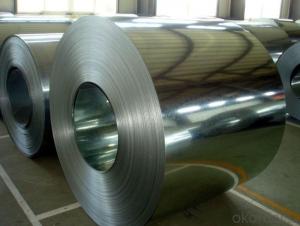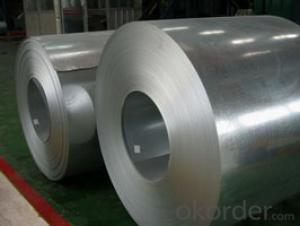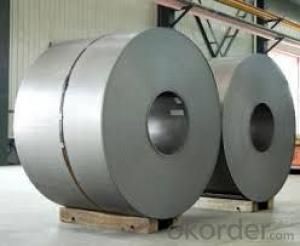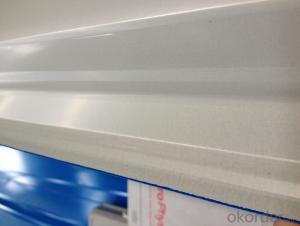Steel Plates,Steel Sheets,Sheets Steel Made In China
- Loading Port:
- Tianjin
- Payment Terms:
- TT OR LC
- Min Order Qty:
- 500 m.t.
- Supply Capability:
- 100000 m.t./month
OKorder Service Pledge
OKorder Financial Service
You Might Also Like
Specification
DESCRIPTION:
GRADE: SS400, ASTM A36, A572, ST37,ST52, Q195, Q215, Q235,Q345, S235JR etc.
STANDARD: GB/T709-2006, ASTM A36, JIS G3101, DIN EN 10025, SAE 1045, ASTM A570
SPEC: 1)Width: 600-2500mm or 1000,1050,1250,1500,1800,2000mm
2)Thickness:1.5mm-200mm or as customers’ special requirements;
3)Length: 2-12m or as customers’ special requirements
FEATURES OF STEEL COILS
(1)Good ductility
(2)Good corrosion resistance
(3)Excellent abrasion resistance and fatigue strength
(4)Good weldability
(5)Oxidation resistant performance
(6)Excellent in high temperature
DETAILED PICTURES FOR STEEL COILS


EXPORT MARKET FOR STEEL COILS/SHEETS
Our target market is the international market. Every year we export most of products to countries like India, Pakistan, South Korea, Brazil, Australia, South Africa, Spain, Sri Lanka, Taiwan, Hong Kong, etc.
OUR SERVICE
1.High quanlity and reasonable price.
2.Customized on-demand.
3.Reasonable shipping and fast delivery.
4.Free sample.
FAQ:
Q:Do you have OEM service?
A: Yes.Variety of products size,quality and quantity can be customized according to your need.
Q:Could you support free sample?
A:Yes.We can supply FREE samples.But the delivery charges will be covered by our customers.
Q:How about the delivery time?
A:Within 15-30days after receiving the deposit or L/C at sight.
- Q: Do the steel sheets have any specific fire ratings?
- Yes, steel sheets can have specific fire ratings. Fire ratings for steel sheets are determined by their ability to withstand fire and prevent the spread of flames. These ratings are typically classified based on the amount of time the steel sheets can resist fire before it penetrates or collapses. Common fire rating classifications for steel sheets include 30 minutes, 60 minutes, 90 minutes, and 120 minutes. These ratings are determined through rigorous testing methods that evaluate the steel sheets' performance under fire conditions, such as exposure to high temperatures and flames. It is important to consult the manufacturer or supplier for specific fire ratings of the steel sheets to ensure they meet the required safety standards for your intended application.
- Q: How do steel sheets perform in high-wind areas?
- Due to their inherent strength and durability, steel sheets are highly effective in high-wind areas. They offer excellent resistance against strong winds and are commonly used for roofs and walls in regions prone to hurricanes, tornadoes, or severe weather. The robust nature of steel allows it to withstand high wind speeds without any deformation or damage. Steel sheets are specifically designed and manufactured to meet wind load requirements, ensuring their ability to endure the forces generated by strong winds. This makes them a dependable choice for structures in high-wind areas. Furthermore, steel sheets are securely fastened to the underlying structure, further enhancing their resistance to wind. Proper installation techniques and fasteners are crucial in ensuring the sheets remain intact during extreme weather conditions. Additionally, steel sheets can be designed with interlocking profiles, providing an extra layer of protection against wind-driven rain and debris. In terms of maintenance, steel sheets require minimal upkeep in high-wind areas. They are resistant to rot, insect damage, and decay, which are major concerns in regions with high humidity and frequent rainfall. Moreover, steel sheets have a long lifespan, offering long-term protection against wind damage. However, it is vital to consider the overall design and construction of a building when evaluating the performance of steel sheets in high-wind areas. The structural integrity of the entire system, including the framing and connections, should be properly engineered to withstand expected wind loads. Sufficient bracing and reinforcement should also be incorporated into the building's design to ensure optimal performance and safety. In conclusion, steel sheets are an excellent option for high-wind areas due to their strength, durability, and ability to resist wind damage. When installed correctly and integrated into a well-designed structure, steel sheets provide reliable protection against strong winds, making them a preferred material in regions prone to severe weather conditions.
- Q: How can steel plates with a thickness of 1MM be welded?
- 1mm steel plate is best made by spot welding or flash welding, for example, electrical welding will cause plate deformation
- Q: How do steel sheets differ from steel plates?
- Steel sheets and steel plates differ primarily in terms of thickness. Steel sheets are generally thinner, typically ranging from 0.4mm to 6mm, whereas steel plates are thicker, usually starting from 6mm and above. Additionally, steel sheets are often used for applications that require flexibility and can be easily formed, while steel plates are commonly used in structural and heavy-duty applications that demand higher strength and durability.
- Q: What are the different surface treatments available for steel sheets?
- Some common surface treatments available for steel sheets include galvanizing, painting, powder coating, and plating.
- Q: What is the average moisture resistance of steel sheets?
- The average moisture resistance of steel sheets can vary depending on the specific type of steel and the protective coatings applied. Generally, steel sheets exhibit good moisture resistance due to their inherent ability to resist corrosion. However, additional surface treatments like galvanization can further improve their resistance by adding a layer of zinc to protect against moisture and corrosion. Providing an exact average moisture resistance value is challenging as it depends on factors such as the steel grade, thickness, and coating. Steel sheets with galvanized coatings typically offer excellent moisture resistance, with some studies reporting corrosion rates as low as 0.1-0.5 micrometers per year in highly corrosive environments. It is important to consider that the performance of steel sheets in resisting moisture can also be affected by factors like scratches, cuts, or exposure to chemicals. Proper maintenance, regular inspection, and careful handling of steel sheets are crucial to ensure their optimal moisture resistance over time.
- Q: Can steel sheets be used for electrical transformers?
- No, steel sheets cannot be used for electrical transformers as they do not possess the necessary magnetic properties required for efficient transformer operation. Laminated iron cores are typically used in transformers to minimize energy losses and ensure proper magnetic flux.
- Q: What is the maximum thickness of a steel sheet?
- The maximum thickness of a steel sheet can vary depending on various factors such as the type of steel, the manufacturing process, and the intended use. However, generally speaking, steel sheets can be manufactured up to a thickness of around 25 millimeters (1 inch) or even thicker in some cases. Thicker steel sheets are often used in heavy-duty applications such as construction, shipbuilding, and industrial machinery where strength and durability are crucial. It is important to consult with manufacturers or industry standards to determine the specific maximum thickness for a particular type of steel sheet.
- Q: Can steel sheets be used for manufacturing security doors?
- Yes, steel sheets can be used for manufacturing security doors. Steel is a strong and durable material that provides excellent security and protection. It can withstand forced entry attempts and offers resistance to break-ins. Steel sheets are commonly used in the construction of security doors due to their high tensile strength, which makes them difficult to bend or break. Additionally, steel doors can be reinforced with additional features such as multiple locks, deadbolts, and security bars for enhanced security. Overall, steel sheets are a reliable choice for manufacturing security doors.
- Q: What are the different coating options available for steel sheets?
- There are several coating options available for steel sheets, including galvanized coating, zinc coating, epoxy coating, powder coating, and paint coating. Each option provides different benefits such as corrosion resistance, durability, aesthetic appeal, and ease of maintenance. The choice of coating depends on the specific requirements of the application and the desired outcome.
Send your message to us
Steel Plates,Steel Sheets,Sheets Steel Made In China
- Loading Port:
- Tianjin
- Payment Terms:
- TT OR LC
- Min Order Qty:
- 500 m.t.
- Supply Capability:
- 100000 m.t./month
OKorder Service Pledge
OKorder Financial Service
Similar products
Hot products
Hot Searches
Related keywords


































